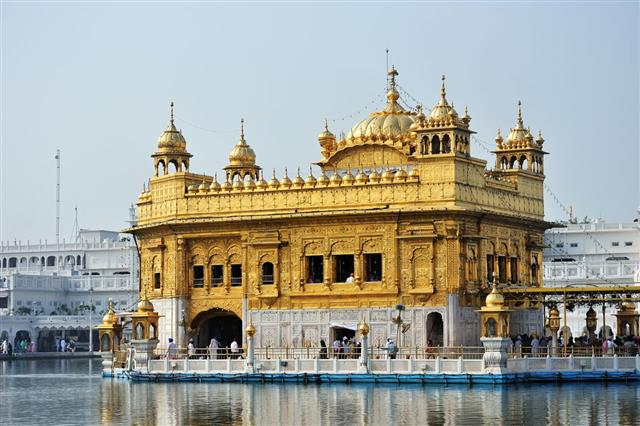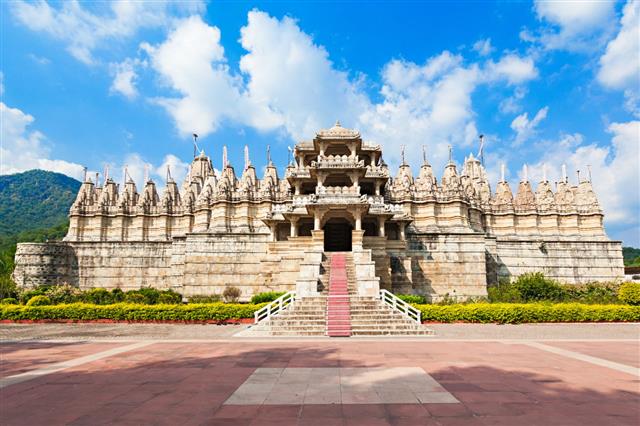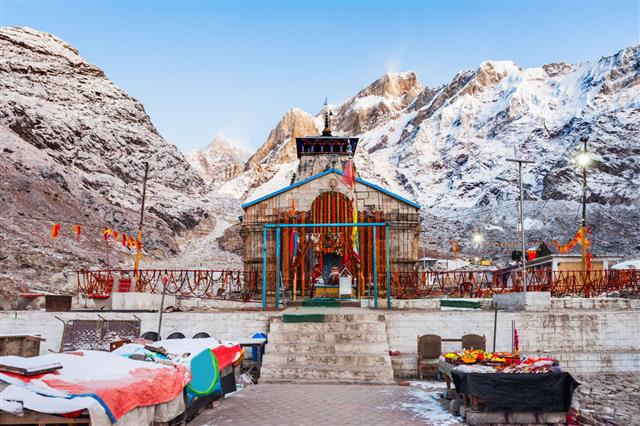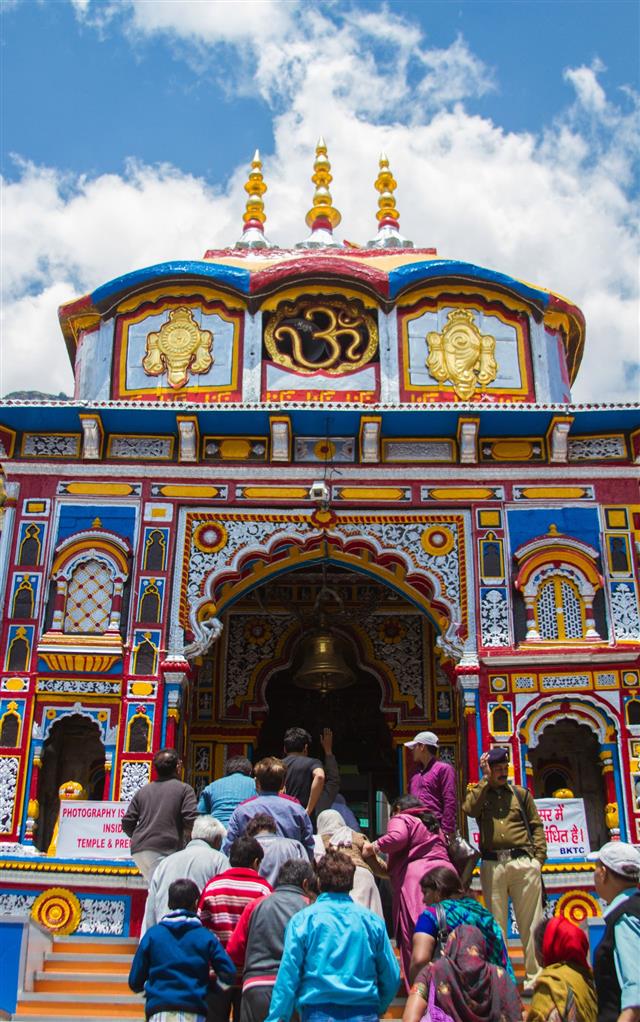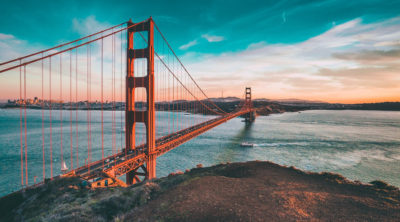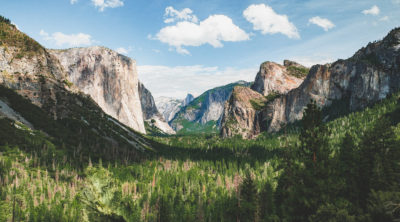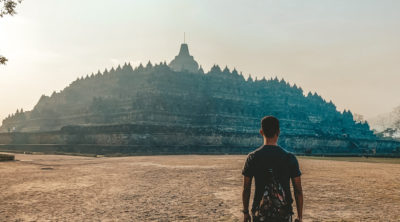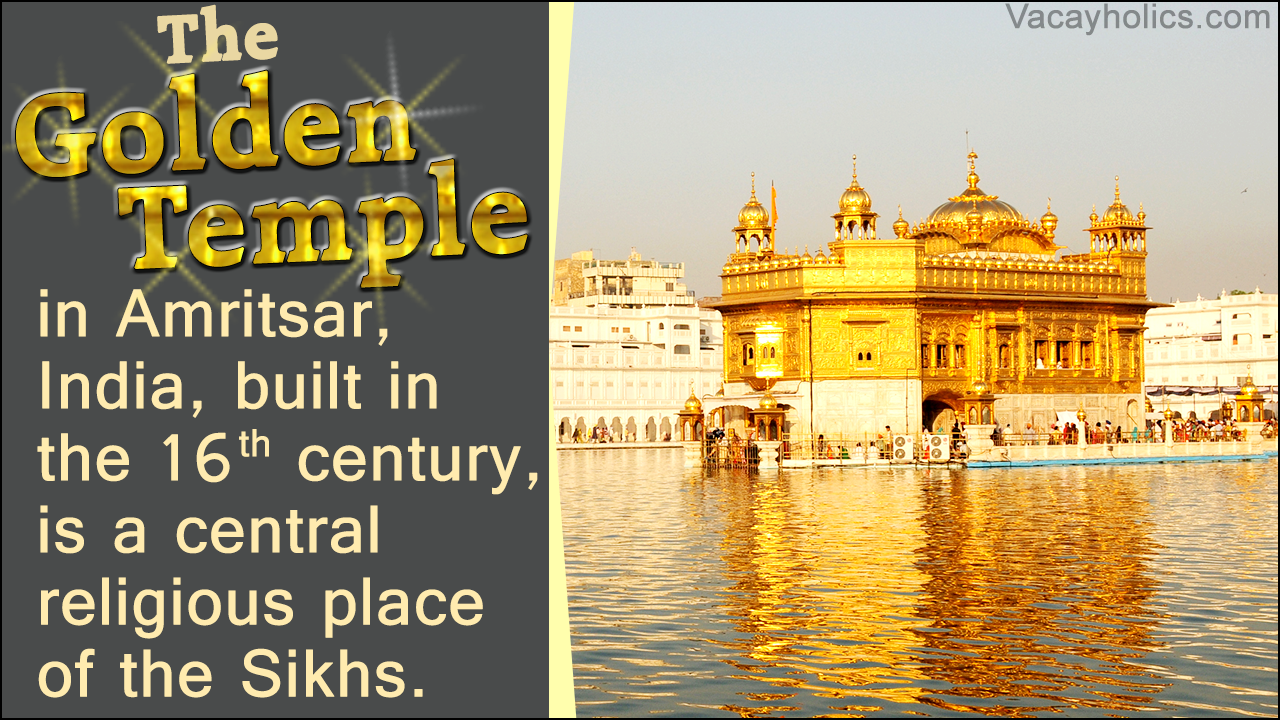
India is home to some of the biggest and richest temples in the world. This Vacayholics article is a compilation of 20 famous ancient temples in India that you should try to visit.
Did You Know?
The Srirangam Temple in Tamil Nadu, India, is spread over an area of 156 acres, and is the largest functioning Hindu temple in the world.
Known as the Land of Spirituality, India was the birthplace of four major religions, namely Hinduism, Jainism, Buddhism, and Sikhism. Therefore, it is home to innumerable temples belonging to various religions. Although the exact number of temples is unknown, there are an estimated 1,08,000 temples in India.
Most of the Hindu temples are an example of the Dravidian, Nagara, Chalukya, or Kalinga architectural styles. The temples are dedicated to various Hindu deities, such as Lord Shiva, Lord Ganesha, Lord Vishnu, and Goddess Durga. Among the most famous temples in India are the ones dedicated to Lord Shiva and Lord Vishnu.
Sri Ranganathaswamy Temple, Tamil Nadu

Sri Ranganathaswamy Temple, located in Srirangam, Tiruchirappalli, Tamil Nadu, which occupies a whopping 156 acres, is the largest temple in India. The temple is dedicated to Lord Ranganatha, a reclining form of Lord Vishnu. The temple is surrounded by a 1000 m wall, and has 21 towers, 39 pavilions, and 50 shrines. The hall of 1000 pillars, which is one of the main tourist attractions, was constructed between 1336 and 1565 CE. The pillars have intricate designs of horses bearing riders on their backs. Among the 21 towers (gopurams) of the temple, the Rajagopuram (13 tiers) is 73 m high, and is the second tallest temple tower in Asia.
Timings: 6:00 a.m. to 9:00 p.m. (all days of the week)
Festivals: 21-day Vaikuntha Ekadesi Festival (December/January), Uriyadi (August/September)
Nearby: Rockfort, River Cauvery, St. John’s Church, Kallanai Dam, Government Museum
Golden Temple, Punjab
The Harmandir Sahib, commonly recognized as the “Golden Temple”, is a Sikh Gurudwara in Amritsar, Punjab. Built in 16th century by the fourth Sikh guru, Guru Ram Das Sahib Ji, the Golden Temple is a central religious place of the Sikhs. It is surrounded by a large tank (Sarovar) which consists of holy water (Amrit). The temple’s architecture has been inspired from both Hindu as well as Muslim architectural styles. The temple has been richly decorated with golden coating, precious stones, and marble sculptures. The temple, with its four entrances, indicates that everyone, irrespective of their caste, class, or creed, is welcome in the temple.
Timings: 2:30 a.m. to 10:30 p.m. (all days of the week)
Festivals: Vaisakhi (second week of April ), Guru Nanak Gurpurab (15th April), Bandi Shor Diwas (November), Diwali (October-November)
Nearby: Jallianwala Bagh, Wagah Border, Summer Palace of Maharaja Ranjit Singh, Akal Takht, Bathinda Fort
Swaminarayan Akshardham Temple, Gujarat

The majestic temple of Swaminarayan Akshardham is located in the capital city of Gandhinagar, Gujarat. It was built in 1992, and is dedicated to Lord Swaminarayan. The temple, which is set in a 23-acre plot, has been built using six thousand tons of pink sandstone. The 2.2 m high, 1.2 ton, gold-plated idol of Lord Swaminarayan is the highlight of the temple. Apart from the temple monument, the garden amidst which it stands, is also very beautiful. Also, to look forward to is the water show displayed in the evenings, which depicts the Hindu fable of Nachiketa.
Timings: 9:30 a.m. to 7:30 p.m. (closed on Mondays)
Festivals: Makar Sankranti (January), Diwali (October/November), Navratri (September/October)
Nearby: Sabarmati Ashram, Adalaj, Indroda Nature Park, Gujarat Science City, Gandhinagar Lake.
Khajuraho Temple, Madhya Pradesh

The Khajuraho Temples, located in the Chhatarpur District of Madhya Pradesh, were built between 950 and 1150 CE by the Kings of Chandela dynasty. The 25 temples, scattered over an area of 9 square miles, are extremely popular for their erotic sculptures. They are made out of sandstone with shades of pink, pale yellow ,and buff, and were put together using mortise and tenon joints instead of mortar. Each temple has an entrance, a hall, and a sanctum. The exterior of the temples are highly decorated with intricate carvings. The carvings depict the sexual activities between people, the traditional lifestyle of women in the medieval age, as well as everyday life through sculptures of musicians, farmers, potters, and other folk. The temples have been listed as a UNESCO World Heritage Site.
Timings: 5:00 a.m. to 12:00 p.m. and 4:00 p.m. to 9:00 p.m. (all days of the week)
Festivals: Classical Dance Festival (February/March)
Nearby: Archaeological Museum, Folk Art Museum, Ajaigarh Fort, Kalinjar Fort, Raneh Falls
Meenakshi Temple, Tamil Nadu

The Meenakshi Temple, located on the southern bank of the Vaigai river in the city of temples, Madurai, Tamil Nadu, was built between 1623 and 1655 CE. It is dedicated to Goddess Parvati and Lord Shiva, who are believed to have ruled the city of Madurai as Goddess Meenakshi and Lord Sundareshwar. The temple occupies 45 acres of land, and has a structure of concentric quadrangular enclosures and high walls. It has 14 towers, the highest being the southern tower, which is 52 m in height. It is one of the few temples in the state, which has four entrances in all four directions. The temple attracts 15,000 visitors a day, and was among the top 30 nominees for the New Seven Wonders of the World.
Timings: 5:00 a.m. to 12:00 p.m. and 4:00 p.m. to 10:00 p.m. (all days of the week)
Festivals: Meenakshi Kalyanam Festival, Chithirai Thiruvizha (April/May)
Nearby: Gandhi Memorial Museum, Samanar Hills, Athisayam Water Park, Thiruparankundram Murugan Temple, Banana Market, St. Mary’s Cathedral
Lotus Temple, Delhi

The Lotus Temple, also known as the “Baha’i House of Worship”, is located in New Delhi and occupies a property of 26 acres. Built in 1986, the lotus-shaped temple is built entirely in pure white marble. The shape of lotus was chosen, considering its importance to Hinduism, Jainism, Buddhism, and Islam. The temple is surrounded by nine ponds and gardens, one for each entrance. All the entrances lead to a central hall, which is 40 m tall and capable of accommodating 2,500 people. The temple has attracted more than 50 million visitors so far and was listed in the Guinness World Records for being the most visited religious building in 2001.
Timings: 9:00 a.m. to 7:00 p.m. (Mondays closed)
Nearby: Humayun’s Tomb, Connaught Place, India Gate, Rashtrapati Bhavan, National Museum, Chandni Chowk, Red Fort, Jama Masjid, Qutub Minar, National Zoological Park, Birla Temple
Ranakpur Jain Temple, Rajasthan
The Ranakpur Jain temple is located in the Aravalli hills in Ranakpur village, in the Pali district of Rajasthan. It is dedicated to Adinatha, the traditional founder of Jainism, and forms one of the five major pilgrimages of the Jains. The temple is believed to have been built by Seth Dharna Shah, a Jain businessman, during the reign of the Rajput monarch, Rana Kumbha, in the 15th century. It is entirely built in light-colored marble, and has 1400 intricate carved pillars that support it. In all, the temple has 24 pillared halls, 80 domes, and 400 columns. Also remarkable is that fact that the pillars change their colors from gold to pale blue, as the sun shifts its rays through the day. The temple, due to its exquisite beauty, has been nominated among the top 77 wonders of the world.
Timings: 12:00 p.m. to 6:00 p.m. (all days of the week)
Festivals: Ranakpur Festival (between October and December)
Nearby: Maharani Bagh Orchard, Aravali Hills, Jodhpur, Udaipur
Brihadeeswarar Temple, Tamil Nadu

The Brihadeeswarar Temple, which turned 1000 years old in 2010, is one of the largest temples and most-prized possessions of India. Also called “Periya Kovil”, the temple is located in Thanjavur in the state of Tamil Nadu, and was built by King Rajaraja Chola I in the 11th century CE. The temple is dedicated to Lord Shiva and is an epitome of the Tamil architecture during the Chola dynasty. The tower of the temple is 66 m tall, and the gopuram of the main entrance is 30 m high. The large statue of Nandi at the entrance of the temple measures 5 m in length and 4 m in height. The exterior of the temple is decorated with hundreds of sculptures and murals, whereas the inner walls of the sanctum have sculptures of the 108 dance poses of Lord Shiva. Also notable is the fact that the shadow of the tower over the gateway of the temple never falls on the ground. The temple is a UNESCO World Heritage Site.
Timings: 6:00 a.m. to 9:00 p.m. (all days of the week)
Festivals: Maha Shivratri (February/March)
Nearby: Saraswathi Mahal, Sangeetha Mahal, Schwartz Church, Thanjavur Royal Palace, Grand Anicut, Vijayanagara Fort
Konark Sun Temple, Odisha

The Sun Temple, also known as the “Black Pagoda” is situated in Konark, Odisha. It is supposed to have been built by King Narasimhadeva I in 1250. It is dedicated to the Sun God and follows the Kalinga style of architecture. The temple is in the shape of a giant chariot, which has 12 pairs of beautifully carved wheels, being drawn by 7 spirited horses. The main sanctum, which was 70 m high, fell off in 1837 due to its weight. The temple complex now consists of an audience hall, a dancing hall, and a dining hall. The temple was declared a UNESCO World Heritage Site in 1984.
Timings: 8:00 a.m. to 5:00 p.m. (closed on weekends)
Festivals: Konark Dance Festival (December)
Nearby: Chandrabhaga Sea Beach, Archaeological Museum, Ramachandi Temple, Shri Jagannath Temple
Chennakesava Temple, Karnataka

The Chennakesava Temple is located on the banks of Yagachi river in Belur. It was built by the Hoysala Empire King, Vishnuvardhana in 1117 AD to celebrate an important military victory. The temple is made of chloritic schist, commonly known as soapstone. The mandapa(hall) which has 60 compartments, is the main attraction of the temple. The pillars in the hall have delicate designs of them, the most popular being the ones in the Narasimha temple. The temple has been proposed to be listed under the UNESCO World Heritage Sites.
Timings: 7:30 a.m. to 8:00 p.m. (all days of the week)
Festivals: Annual Car Festival (March/April)
Nearby: Kedareshwara Temple, Archaeological Museum, Yagachi Dam, Shravanabelagola, Hoysaleswara Temple, Veera Narayana Temple, Pushpagiri Wildlife Sanctuary
Kedarnath Temple, Uttarakhand
Kedarnath temple is located on the Garhwal Himalayan range near Mandakini river, a tributary of Ganges, in Kedarnath, Uttarakhand. It is believed to have been constructed in the 8th century CE by Adi Shankaracharya. One of the four Chota Char Dham pilgrimage sites, the temple lies at an altitude of 3,584 m. The temple is said to be more than 1,000 years old, and is built using huge slabs of stones. The hall of the temple has the statues of the five Pandavas, as well as their wife Draupadi and other deities. The temple is open only between April and November due to extreme weather conditions. Although the temple was closed for a year due to extensive damage in the 2013 Uttarakhand floods, it reopened in May 2014.
Timings: 4:00 a.m. to 3:00 pm and 5:00 p.m. to 9:00 pm (all days of the week)
Festivals: 8-day Badri-Kedar Festival (June), Maha Shivratri (February/March)
Nearby: Guptakashi, Chopta, Chorabari Tal, Gaurikund, Rudraprayag, Vasuki Tal, Shankaracharya Samadhi, Ukhimath, Kalimath, Kedarnath Wildlife Sanctuary
Kashi Vishwanath Temple, Uttar Pradesh

The Kashi Vishwanath temple is located on the western bank of River Ganges in Varanasi, Uttar Pradesh. It is dedicated to Lord Shiva, and is one of the twelve Jyotirlingas, the holiest shrines of Lord Shiva. The temple was built by the Maratha ruler Queen Ahilyabai Holkar during her reign, in 1777 CE. The main temple is a quadrangle and is surrounded by various smaller temples like Kaalbhairav, Avimukteshwara, Vishnu, and Vinayaka temples. The 15.5 m high gold spire and the three domes made up of pure gold are the highlights of the temple. This temple is one of the most visited temples in India, and has had up to 1,000,000 visitors on a few occasions.
Timings: 3:00 a.m. to 10:30 p.m. (all days of the week)
Festivals: Mahashivratri (February/March)
Nearby: Manikarnika Ghat, Dasaswamedh Ghat, Kedar Ghat, Dhamek Stupa, Sarnath, Ramnagar Fort, Tulsi Manas Temple, Banaras Hindu University, Alamgir Mosque
Shore Temple, Tamil Nadu

The Shore Temple is located on the shores of Coromandel Coast of the Bay of Bengal in Mahabalipuram, in Tamil Nadu. Built somewhere between the 700 and 728 CE during the reign of the Pallava King Rajasimha, the temple is called so due to its location on the shore. It is believed that there were, in all, seven temples on the shore known as the Seven Pagodas, out of which the Shore Temple is the only survivor. The temple complex consists of three temples dedicated to Lord Shiva and Lord Vishnu. The main temple, dedicated to Lord Shiva, has five stories and is sculpted entirely out of granite. The spire of the temple is extensively decorated with carvings and sculptures. It is also well-known for the five chariots or Pancha Rathas. The temple is one of the oldest temples in India, and was also declared as a UNESCO World Heritage Site in 1984.
Timings: 6:30 am to 5:30 pm (all days of the week)
Festivals: Pongal, Mahabalipuram Dance Festival
Nearby: Mahabalipuram Beach, Sculpture Museum, Dakshinachitra, Krishna’s Butterball, Mahishamardini Cave, Arjuna’s Penance
Chhatarpur Temple, Delhi

Chhatarpur Temple, also known as Shree Adya Katyayani Shaktipeeth Mandir, located in the south of Delhi, was established in 1974 by Baba Sant Nagpal Ji. It is the second largest temple in India and is dedicated to Goddess Katyayani. The temple has both, North and South Indian architectural styles and is constructed entirely of marble. The temple complex is spread over an area of 70 acres, and has 20 small and large temples dedicated to other deities. Inside the main temple is a shrine of Goddess Durga, which is brought out only during the festival of Navratri.
Timings: 6:00 a.m. to 10:00 p.m. (all days of the week)
Festivals: Navratri (September/October)
Nearby: Humayun’s Tomb, Connaught Place, India Gate, Rashtrapati Bhawan, National Museum, Chandni Chowk, Red Fort, Jama Masjid, Qutub Minar, National Zoological Park, Birla Temple
Badrinath Temple, Uttarakhand
The Badrinath Temple, located in Garhwal hill tracks in Chamoli district in Badrinath, Uttarakhand, is one of the Chota Char Dham pilgrimage sites. The temple is located on the banks of the Alaknanda river, at an elevation of 3,133 m. The temple is dedicated to Lord Vishnu, and has a 1 m tall black stone idol of Vishnu in the form of Badri Narayan. The architecture of the temple is similar to that of a Buddhist temple. The temple has three structures: the Garbhagriha, worship hall, and convention hall. The hot springs below the temple, also called Tapt Kund, are believed to have healing properties. The temple has as many as 1,000,000 visitors every year.
Timings: 4:00 a.m. to 12:00 p.m. and 3:00 p.m. to 9:00 p.m.
Festivals: 8-day Badri-Kedar Festival (June), Maha Shivratri (February/March)
Nearby: Vasudhara Falls, Satopanth, Brahma Kapal, Charan Paduka, Bheem Pul, Neelkanth
Dilwara Temples, Rajasthan

The Dilwara temples are about 3 km away from Mount Abu, Rajasthan. They were built by the Chalukyas between the 11th and 13th centuries CE. The Dilwara temples include five temples dedicated to the various Jain Tirthankars. They are completely made of marble, and are known for their exquisite stone carvings. The arches, ceilings, doorways, and pillars of the temples have been intricately carved with flowers, petals, and scenes from the Jain mythology.
Timings: 12:00 p.m. to 6:00 p.m. (all days of the week)
Festivals: Mahavir Jayanti (March/April)
Nearby: Mount Abu, Guru Shikhar, Nakki Lake, Gaumukh Temple, Achalgarh Fort
Sri Vijaya Vittala Temple, Karnataka

The Vijaya Vittala Temple is located in Hampi, a village in Northern Karnataka. It was built in the 15th century, and is dedicated to Lord Vishnu. Its 56 musical pillars are the main highlight of the temple. The several gateway towers and compound walls are an excellent example of the Dravidian architecture. The temple complex has several pavilions, halls, and temples. The stone chariot in the complex is also very famous, and is the symbol of Karnataka Tourism. The temple is listed as a UNESCO World Heritage Site.
Timings: 8:30 a.m. to 5:00 p.m. (all days of the week)
Festivals: Annual Purandaradasa Festival (January/February)
Nearby: Virupaksha Temple, Hampi Bazaar, Elephant Stables, Daroji Bear Sanctuary, Lakshmi Narasimha Temple, Hemakuta Hill Temples, Big Shivlinga, Hazara Rama Temple, Monolith Bull, Queen’s Bath, Zanana Enclosure, Achyuta Deva Raya Temple, Statue of Lakshmi Narasimha
Galtaji Temple, Rajasthan

Nicknamed as the Jewel of Jaipur, the Galtaji Temple is located in Galtaji, about 10 km away from Jaipur, Rajasthan. The temple is also called the “Monkey Temple” owing to the large number of monkeys who dwell here. It was built in the 18th century by Diwan Rao Kriparam, a courtier of King Sawai Jai Singh II. The main temple is built in pink stone, and features rounded roofs, carved pillars, and painted walls which depict the scenes from Lord Krishna’s life. The temple complex looks more like a palace or Haveli than a shrine. It has several temples and is especially famous for its water tanks (kunds) in which the pilgrims bathe. There are in all 7 kunds, out of which the Galta Kund is supposed to be the holiest one.
Timings: 5:00 a.m. to 9:00 p.m. (all days of the week)
Festivals: Makar Sankranti (mid-January), Elephant Festival (March)
Nearby: Hawa Mahal, Albert Hall Museum, City Palace, Sisodia Rani Ka Bagh, Amer Fort, Birla Mandir, Jal Mahal
Durga Temple, Uttar Pradesh

The Durga Temple located in Varanasi India, is dedicated to Goddess Durga, consort of Shiva. It is believed to have been built in the 18th century by a Bengali Queen. The temple is built in the North Indian, Nagara style of architecture, and is made up of many small conjoined spires. The red ochre of the temple symbolizes Goddess Durga’s strength and power.
Timings: 5:00 a.m. to 11:00 p.m. (all days of the week)
Festivals: Navratri (September/October), Nag Panchami (July/August).
Nearby: Manikarnika Ghat, Dasaswamedh Ghat, Kedar Ghat, Dhamekh Stupa, Sarnath, Ramnagar Fort, Tulsi Manas Temple, Banaras Hindu University, Alamgir Mosque
Thanumalayan Temple, Tamil Nadu

Thanumalayan Temple, located in Suchindram town of Kanyakumari, Tamil Nadu, was built in the 17th century. It is also referred to as the “Sthanumalayan” or “Suchindram Temple”. Thanumalayan stands for Thanu (Shiva), Mal (Vishnu), Ayan (Brahma)―the three deities worshiped in the temple. Just outside the temple is a 6 m Hanuman statue, which has been carved out of a single granite block. Inside the temple are about 30 shrines, each one being an epitome of splendid Dravidian craftsmanship. The temple complex includes a 7-tiered 40 m tall gopuram, several mandapas, and a garbha griha. The main tourist attraction of this temple are its musical pillars, which when tapped, play melodious music. Another highlight of the temple is the beautifully crafted Thirumalai Nayakkar statue in the Garuda Mandapam.
Timings: All days of the week (4 a.m. to 12 p.m. and 5 p.m. to 8 p.m.)
Festivals: 10-day Margazhi/Car Festival (December/January), Chithirai Festival (April/May)
Nearby: Vivekananda Rock Memorial, Tiruvalluvar Statue, Mahatma Gandhi Memorial, Nagercoil, Nagaraja Temple, Kumari Amman Temple, St. Xavier’s Church
A few other famous temples in India are Virupaksha Temple, Tirupati Balaji Temple, Vaishno Devi Temple, Siddhivinayak Temple, Dwarkadhish Temple, Amarnath Cave Temple, and Shirdi Saibaba Temple.
